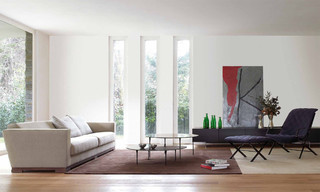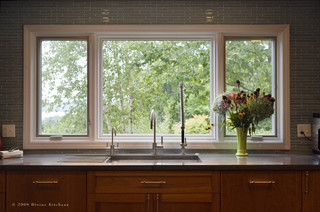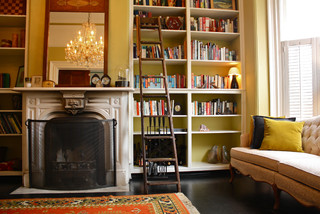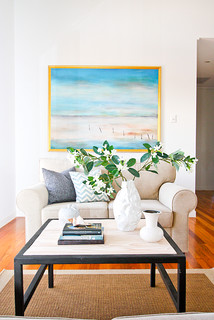 |
Here is an example of what it can look like when
you open up new windows between existing studs. Modern Living Room by Philadelphia Furniture
and Accessories Usona. Photo: Houzz.
|
That was my lucky situation a few months ago. The visit to one of my Trout Lake neighbours, a retired architect, was both educational and enlightening.
But most of all, it was a delightful experience of being in a home where careful thought had gone into every design decision. Even the surrounding trees were trimmed to display the most sculptural silhouettes!
Here are five lessons that I took home from my visit:
 |
|
Kitchen And Bath Divine Kitchens LLC.
Photo: Houzz.
|
1) Let windows frame interesting views. Use them in unexpected places, like the end of a hallway, or in places where you tend to spend a lot of time, such as by the kitchen sink. For a less invasive project: create new windows between existing studs. The resulting narrow, vertical windows provide architectural interest, and bring the outside in.
 |
Look at the outstanding corner detail
in this fascia!
|
2) It's all in the details! Give extra thought to how to deal with transitions between materials, corners, joints, etc. The result will make your project stand out!
 |
3) Use the ceiling height to its maximum. Take built-in bookcases and kitchen cupboards all the way to the ceiling. Put less-used items at the top.
4) Pay attention to lighting. A single, big light source in the middle of the room just doesn't cut it. A range of different lights gives more flexibility; think task lighting, ambiance lighting and general lighting. Use dimmers whenever possible.
5) Go big on art. Few things can so instantly change the feeling of a room, whether you go with one big piece, or several smaller pieces grouped in a gallery. See Artful displays, A flexible approach to art and Getting the hang of art for more on art in your home.
 |
|
Ethos Interiors. Photo: Houzz.
|

No comments:
Post a Comment
Note: only a member of this blog may post a comment.